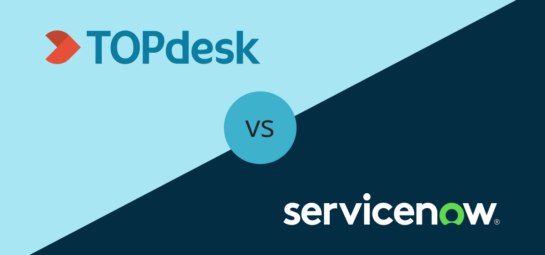How to implement a Shared Services Center

Supporting departments within organizations have traditionally focused on managing and improving their own services. However, end users are becoming more critical and demanding of services supplied by HR, facilities and IT departments. This is why it is time for the supporting departments to combine their strengths to meet the business’ high expectations in the future. It is time for a shared services center.
This focuses on providing better quality for lower prices. IT integrates new technologies and management models to make services easier to manage and faster to change. More and more platforms are cloud-based, process frameworks are still popular and there is more and more demand for ISO certification.
Facilities has been professionalizing services using CAFM systems for a while now. It is just as easy for end users to reserve meeting rooms as request lunches using a portal. Over the past few years, HR has taken the step towards eHRM: supporting HR services using service management software. This also uses shared services center frameworks and best practices developed specifically for the HR market.
Consumerization
It is striking that the individual departments are primarily acting on their own initiative, and each takes their own approach. HR, Facilities and IT managers play a big part in this. After all, it is they who determine strategy, which is currently too focused on their own department.
Meanwhile, the user’s expectations keep growing. Before, people could understand that it took a while to install a software package, and that it was complicated to launch a web page or implement a change in a staff management system. Nowadays end users are less and less patient, as well as less and less understanding. The trend at the root of this is consumerization.
The consumer market has made strides in recent years thanks to IT. Think for instance of the search engines that help you find anything and web shops that let you buy anything. As a consumer, you have to put increasingly little thought and effort into getting your products and services. An additional advantage is that this also makes everything cheaper.
The consequences of this trend can also be seen in the service management field. People are used to having their questions answered in a way that is easy, quick, clear and even free. Employees are coming to expect this at work as well: consumerization. People want to get things done easily, without complicated portals with forms. They want a single desk for all their questions.
Compartmentalization
It will be difficult for organizations with supporting departments using only internally focused strategies to stand up to this new commentary. The reason supporting departments are so focused on themselves is the compartmentalization that has developed since the departments’ creation. They are used to resolving the challenges they face within their own department. Each field has its own frameworks, standards and methodologies (such as ITIL, ISO, NEN) and the schooling for the fields is also separate. As a result, the knowledge platforms, trade shows and magazines are all focused on one specific field: HR, Facilities or IT.
This compartmentalization is anchored in the field and has helped it come a long way. It is obvious that the situation described above cannot be easily changed. It is up to HR, Facilities and IT managers to develop a new strategy that is needed to address the consumerization among their customers in the future.
The solution is enterprise service management: jointly organizing services and improving them in the places where the service provision truly overlaps.
Implement Enterprise Service Management
Enterprise service management (ESM) is a new strategic trend that is stimulated by the consumerization trend. Supporting departments join forces and look for ways to organize their services for their customers – together.
This results in higher quality services for customers while also lowering costs. In doing this, it is important to recognize each department’s expertise and at the same time look for the areas where services overlap and can be improved. This has a synergetic effect: expertise is better shared.
In projects where steps are made toward a shared services center, collaboration is primarily sought out in the areas of tools, organization and process management. The ESM growth model was developed to help achieve shared services. This growth model comprises four phases that can be seen as maturity phases within ESM. The order of these steps results in a logical, incremental change process with each phase focusing on tools, organization or process management.
Each next phase naturally brings the services of the various departments closer together, makes the departments more mature and helps actualize both improved quality and lower costs.
Phase 0: Nothing Shared
Each department uses its own tools to support their processes. This can be anything from sticky notes to using a professional service management tool. The processes between departments are not coordinated and vary greatly in terms of maturity. The employees are focused on their own department. with little cross-breeding – or even awareness of each others’s processes.
This phase’s biggest challenge is sharing the information streams with other departments when necessary. Think for instance of employee changes for which the different departments must perform activities, while each department uses its own service management tools.
Phase 1: Shared Tool
A shared service management tool is used to improve the information stream. This also results in considerable savings when it comes to license costs and management. The various departments still have their own methods based on their own culture.
Regardless, agreements must be made about the terminology used and how the tool is set up. The first signs of project-based collaboration appear. A tip: have the information management department take the lead in this project. This helps avoid big discussions and prevents IT from playing too dominant a role.
During the management phase, it makes sense that information management takes on the functional management. After all, HR, Facilities and IT are all end users of the service management tool. Not much has changed for the end user. They still deal with three parties to support their work: HR, Facilities and IT.
Phase 2: Shared Service Desk
From now on, the end user can take all questions and requests to a single digital and/or physical desk. With the exception of agreements about call registration and routing, each department still works according to its own methods. The collaboration does become more intensive, because operators from different departments start collaborating and improving knowledge sharing at the shared service desk.
This leads to a considerable improvement in quality for the end user, as well as reduced costs resulting from sharing resources at the service desk. A tip: promote this shared service desk using a slogan and a “face” to prevent end users from continuing to use the old channels.
It is primarily the front end that improves: the user sees an improvement, but still experiences different levels of service quality. This is caused by the individual departments maintaining their own work processes. Think for instance of inconsistent communication about status updates and large differences in duration for similar calls.
Phase 3: Shared Processes
The processes and procedures that require the departments to work together, or feature a considerable overlap in activities, are designed in collaboration. Specialized knowledge of the activities to be performed is not necessary to organize good process management.
Processing calls and implementing employee changes are the most obvious actions to start with. However, other options include processing reservations and performing operational tasks.
After implementing these new shared processes, the process management must also be centrally sourced. Depending on the organization, this could be sourced with a separate service management team. The various departments’ management also has an important role to play. It is they who must understand the importance of this phase and of shared processes, and not only communicate this importance, but also recognize the authority of the process managers.
The right ambition
Recent research conducted among 200 organizations has revealed that many organizations have already taken steps toward phases 1 and 2. However, not many organizations have started working on phase 3.
A likely explanation is that the savings diminish and become increasingly less visible as you progress through the growth model. While IT managers continue to focus only on cutting costs, organizations will not be able to progress past phase 2. Optimal results can only be achieved when managers focus not only on savings, but also service quality, regardless of the phase. To continue meeting business demands, it is essential to look beyond costs. The quality of services must also increase.
To make this happen, the ambition must always be the right one. Only then can you continue to meet increasing business demand by combining the strengths of the supporting departments – and saving money in the process. Not the other way around.
Improving Service Quality
The consumerization trend has the business asking for more and more against lower costs. They want to do things faster and more easily, while having to think less and receiving consistent service. This is not something that every supporting department can achieve by themselves.
This is why it’s down to the manager to adjust the strategy accordingly and consciously choose to collaborate with other supporting departments to improve the quality of services.
The Solution
Enterprise service management offers the solution. To implement ESM, strengths must be combined incrementally in terms of tools, service desk and processes, while each department maintains its own expertise.
The goal is to reach shared services with higher quality, with the added benefit of considerably lower costs. This helps you continue to meet end users’ expectations in the future.
Inspire others, share this blog




